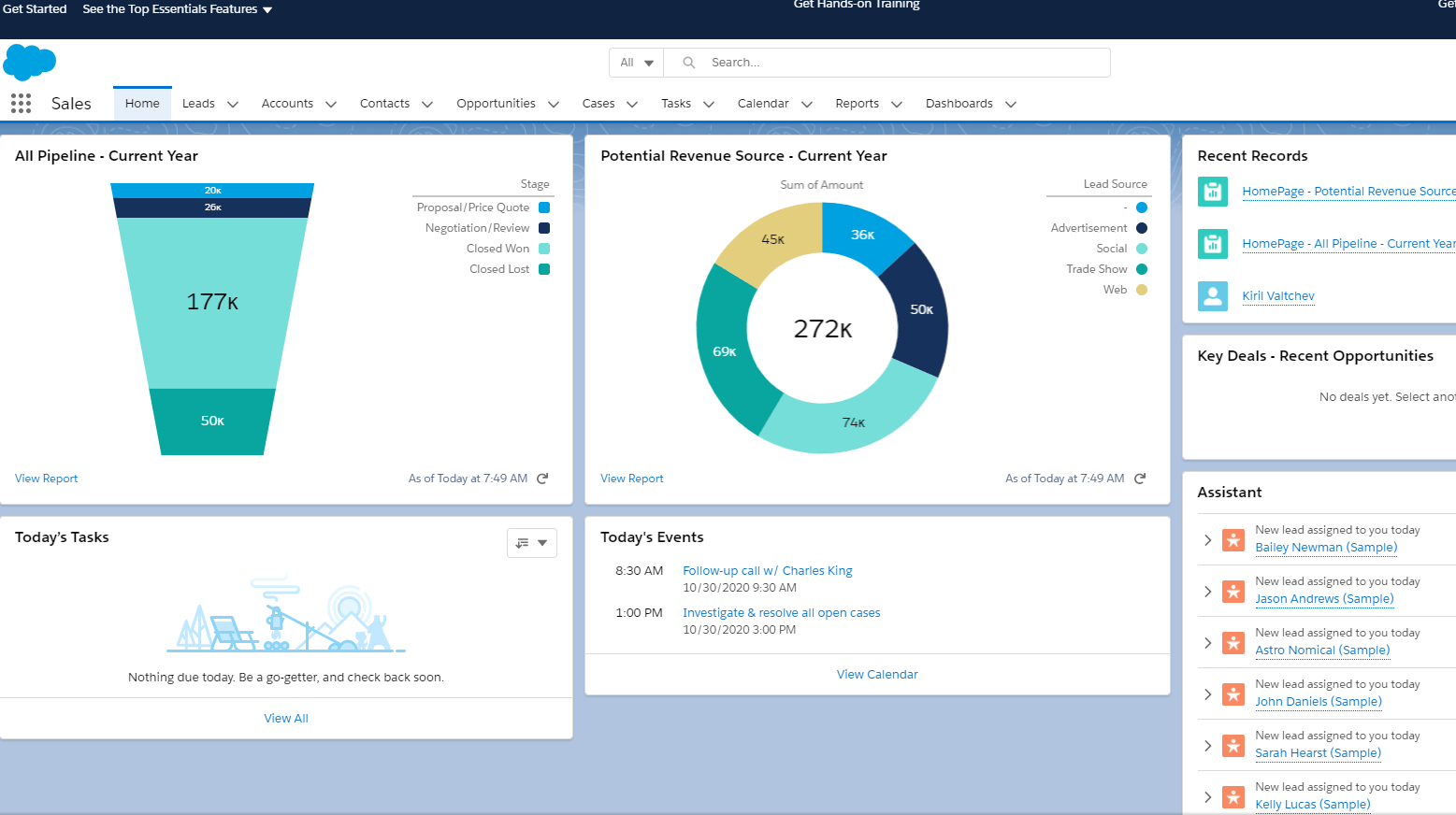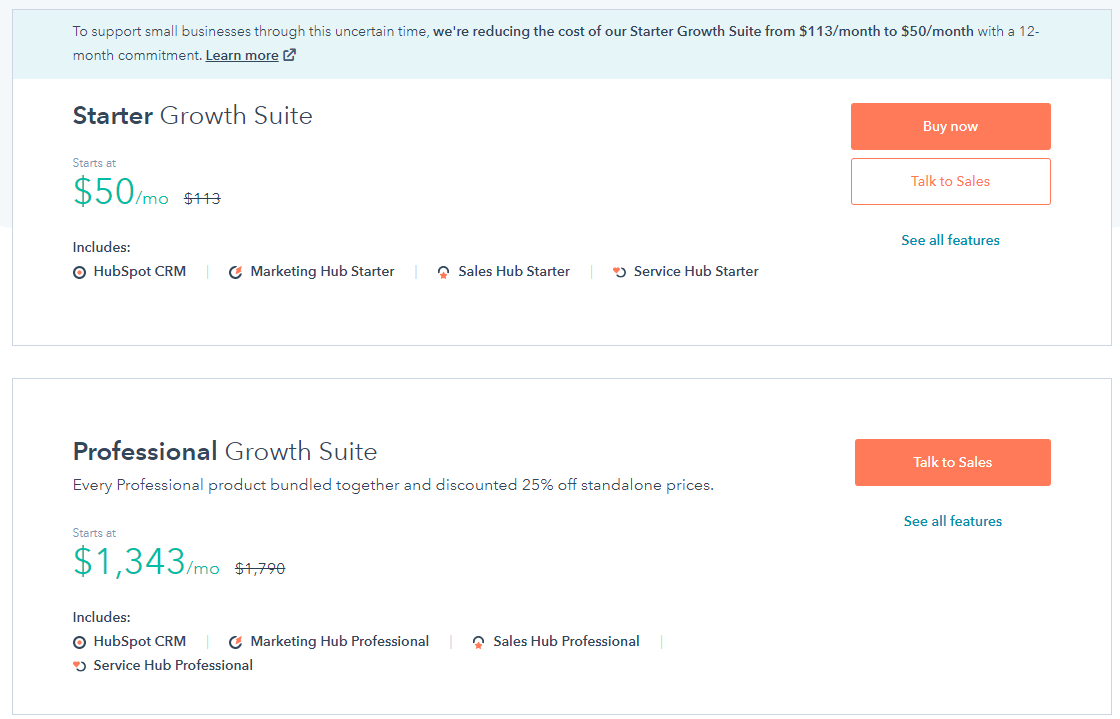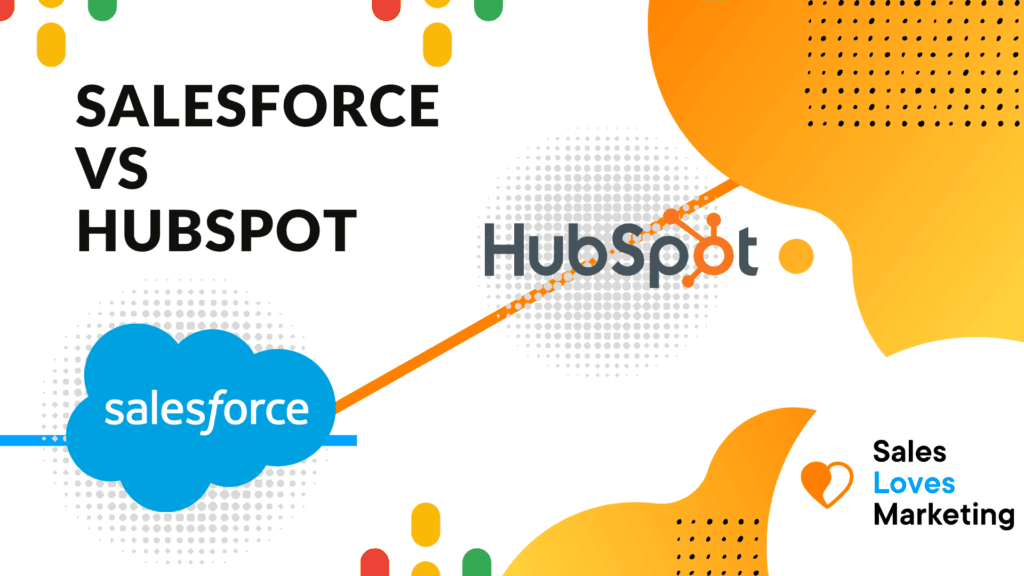Salesforce and Hubspot are two of the most dominant CRM providers on the marketplace. They both provide teams of all sizes with great solutions which have the ability to scale as businesses grow and change.
It’s important to choose the right CRM platform which is in line with the needs of your business. In this article, we will take a look at Salesforce vs. Hubspot and compare their different features, pricing, and how they stack up against each other.
Salesforce Features:

User Interface
When you first sign up for Salesforce you will notice their user interface is somewhat basic, but pretty intuitive. There are a multitude of different options available which can make it a bit confusing if you are using them for the first time.

The great thing about their user interface, once you learn how to utilize all the functionalities, is the ability to to create a custom workspace for the types of tasks that are essential to run your business.
It gives you the ability to truly create a full scale process to automate components of your business that typically cost you time and energy.
Their global actions features allow you to quickly setup a workspace that is relevant to the task you need to set up and complete.

After creating your relevant task you can go in and start placing in the relevant details which pertain to it. This whole process is very simple and the user interface component is very functional and intuitive.
Analytics and Reporting
Salesforce’s analytics and reporting is extremely robust. Not only can you run standard reports such as:
- Sales pipeline reports
- Revenue reports
- Content reports
- Screen flows, etc
You can build custom reports and even custom dashboards which give you total flexibility to create anything you need. You simply create a dashboard, pick the relevant reporting components you would like to see and you have yourself a custom reporting dashboard that is unique to your business.

Once you add this component to your dashboard it will fully display it. If you want to compare different component metrics you simply add an additional component and place it right next to it.

Automation and Integrations
Salesforce becomes even more powerful and automated once you integrate it with some of the most popular apps on the market. Salesforce has properly the largest integration ecosystem out of any CRM provider.

They have a feature of a whole app exchange on your website for a variety of different industries.
Checkout their whole Appexchange Store here.
SalesForce Pricing
Salesforce pricing will depend on the size of your business and it’s underlying needs. For small businesses the basic package starts at $25/month per user. This can quickly run up if you have multiple people at your company which will need access to Salesforce tools.

Considering all the functionalities and customized reporting you can get, these prices are more than fair. If you happen to be a larger business, the costs can go up significantly, but they are reasonable in order to help you manage scale.
That is one of the great components to using Salesforce. If your company is scaling quickly, they have solutions that are well equipped to help you.
Hubspot and Salesforce work better together
Hubspot Features

Just like Salesforce, Hubspot is also a complete CRM platform which has a plethora of tools to help you increase your leads, sales and improve your customer communication flow. It differs from Salesforce due to the fact that it’s split up into 4 different areas. This includes it’s:
- Marketing Hub
- Sales Hub
- Service Hub
- CMS Hub
All are however available to you under one clean menu.
User Interface
In our opinion Hubspot’s user interface is much more functional and cleaner than that of Salesforce. It’s much more simple to use and offers plenty of customization options for creating custom marketing forms, sales pipelines, service tickets and even automated email sequences.

Not to mention they feature rich dashboards in which you can view how your sales, marketing, service and website have performed over time.

Hubspot is much more powerful as a solution for marketers. It allows you to connect to your favorite ad accounts and accurately track your sales and conversions.
They are however a bit limited to only analytics dashboards and tracking website performance. They don’t have the reporting customization options that Salesforce has to offer, but it can still go a long way.
Your client communication flow is also made much easier with the ability to directly link to your favorite email provider, chat provider and form provider directly into the platform

Analytics and Reporting
As we previously mentioned, their analytics and reporting are good, but are a bit limited. There are 3 analytics options under Hubspot and they are the performance dashboard, analytics tools and reporting tools.
Dashboards
The dashboards can be quite useful because they are very quick to create and offer just enough valuable data to where you can gain valuable insights into your digital marketing performance.

The custom dashboard option is their most powerful reporting feature because it allows you to create a dashboard by the report types and content of your choice. Below are some of the reports and content options you can select to analyze.
Pro tip: Check out the marketing glossary of terms.

As a digital marketer this puts you in the front light of how your company and data are performing.
Automation and Integrations
Hubspot features some very good options for automated follow ups and the ability to create customized email drip sequences. As a marketer this is a key component to help you scale your business.

You even have some pretty interesting options in order to help you automate some of your daily mundane tasks with their automated workflows. The automated workflows enabled you to rotate your leads and automate tasks, create automated email campaigns and create full scale ticketing helpdesk for questions and inquiries.
They also feature a rich app store for almost any integration you may need.

Hubspot Pricing
The cool thing about Hubspot’s pricing is that you can create your own bundle based on what you need. If you want all the products (free tools, marketing hub, sales hub and the service hub, hubspot CRM) the cost is only $50/month.

The different pricing options for larger scale operations increase significantly.
The Final Verdict
The truth is that both Salesforce and Hubspot are great options for any business and CRM needs you have. Both of these however work much better and become more powerful if you integrate them together. Want to know who has a bigger marketshare? See the marketshare of Hubspot here.
We understand that this may be a pricier option in the long term, but you can gain a serious edge over your competition by integrating these two apps and making them work together for your business.
If you happen to be a digital marketer whose business is completely online, we believe that Hubspot is a much better, cheaper and functional option. If your business has tons of customers, leads and people to manage, we recommend Salesforce.
Hubspot & Salesforce Alternatives
Haven’t found what you have been looking for? See CRM alternatives listed below, which are great alternatives to either Hubspot or Salesforce;
